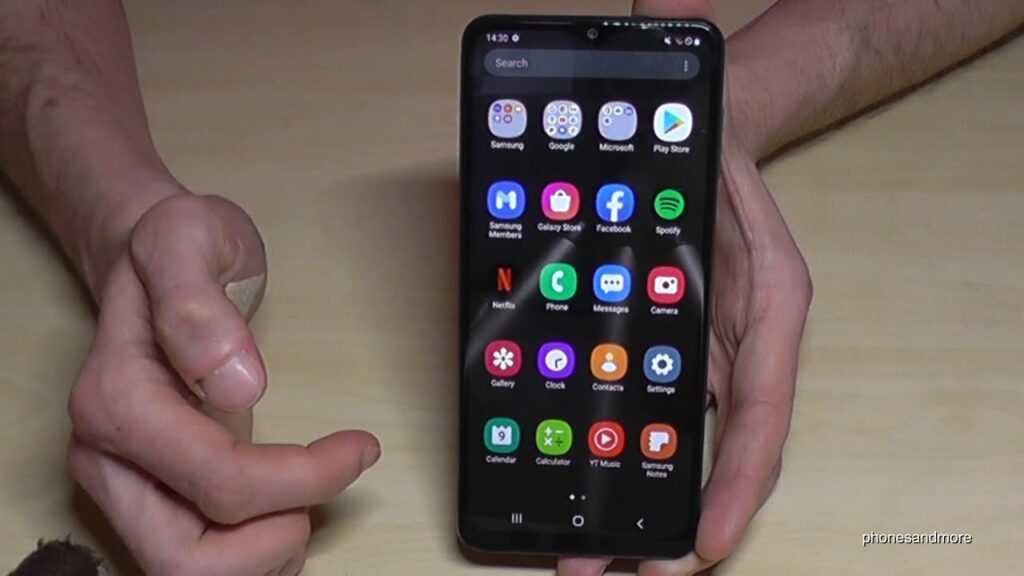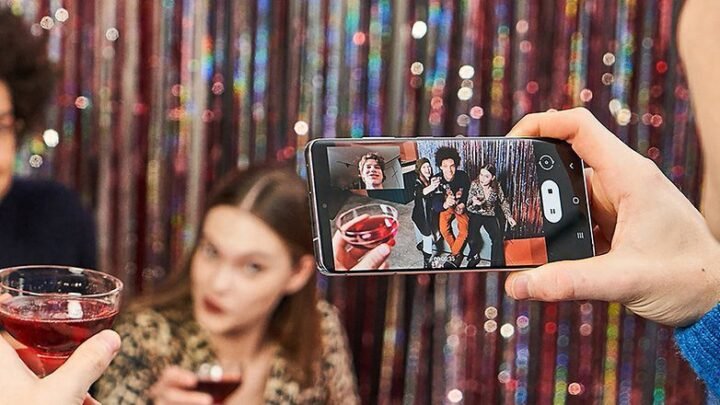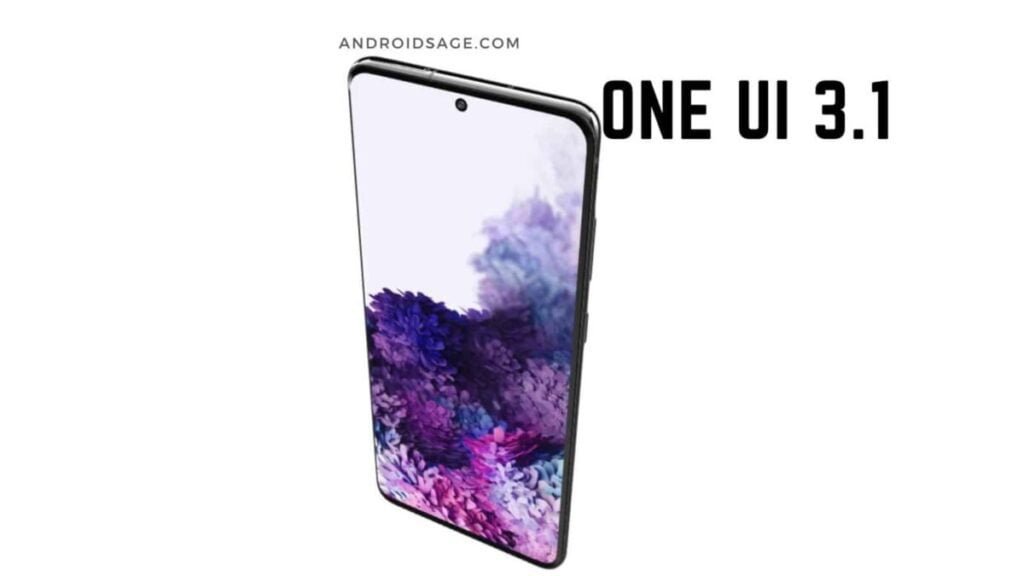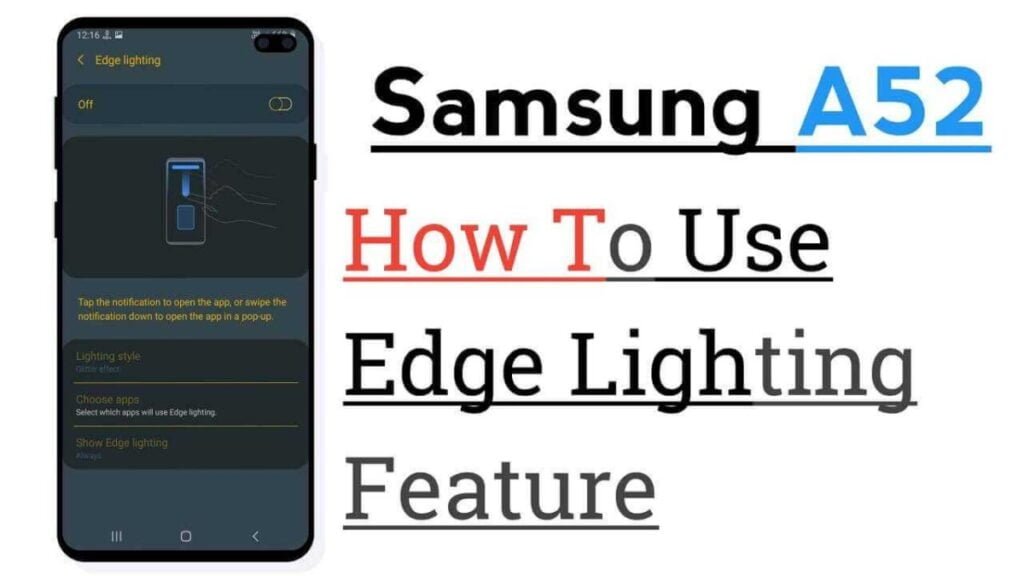Bought a shiny new Samsung Galaxy phone? You may need help familiarizing yourself with the interface or some tips to help you get the most out of your new purchase. That’s exactly what you’ll find in this article! Whether you’re new to Samsung phones or just upgrading from an older model, we’ll tell you the top 10 things to do with a new Galaxy phone to make sure you have the best experience. So grab your phone, sit down and follow these simple steps to get the most out of your device!
1. Disable ads/promotions during the installation process
Of course, the first thing you do when you buy a new phone, other than putting your SIM card in it, is going through the initial setup process. This is quite easy as the instructions will appear on the screen as you navigate through the entire process. However, there are some options during setup that, if selected, may not result in an optimal experience using your phone.
For example, Samsung is known for showing ads and sending promotional notifications on some of its phones. This can be prevented by disabling all options that ask for your permission to display promotional content. It’s easy to ignore these checkboxes when setting up your phone, but the general rule of thumb is not to blindly agree and select all the options on the screen. Be sure to read the options on the screen carefully and select only those that are essential to using your phone.
The installation process in OneUI 4.0
When setting up your Samsung account, you will be asked to agree to several terms and conditions, some of which are mandatory and others optional. Samsung’s terms and conditions, special terms and conditions, and privacy statement must be checked to continue. Select only these options. Do not select the “I have read and agree to the above” option.
After entering your details, you will see a screen that says View additional apps. Uncheck the All apps box below and select only the apps that are important to you. If you don’t use any of the apps listed, you can skip this step altogether. Samsung will also ask you to get recommended apps, which are essentially Samsung’s primary apps, and we don’t see how to skip that.
The installation process in One UI 3.0 and earlier
Agreeing to the End User License Agreement and Privacy Policy are essential, without which you will not be able to use the device. However, sending diagnostic data, linking information, and receiving marketing information is optional and we recommend that you uncheck these boxes, especially the latter. In general, users tend to agree with all of the above options amid the excitement of using the phone. You shouldn’t be doing this. Some budget and mid-range Samsung phones also come with a Lock Screen Stories option that displays unwanted content on the lock screen. Disable it if you see the option during installation. If you see another option with Allow Recommendations…, it is recommended that you disable it.
Another thing to keep in mind when setting up your phone is not to install any unnecessary apps from the recommended apps list. Samsung will try to pressure you into installing apps it works with, but your best bet is to uncheck the ones you don’t need or use. You can install specific apps you need later from the Play Store or restore a data backup/transfer from an older phone that will restore all the apps you use.
2. Transfer data from your old phone, including an iPhone!
Samsung offers a good option to migrate your data from an old phone to a new Galaxy phone. It is called Samsung Smart Switch and the option to use it is presented to you while setting up your new Samsung device. The cool thing is that this process allows you to transfer all your existing data from your old smartphone to your new device. This includes apps, messages, photos, videos, etc. Best of all, Smart Switch allows you to transfer your data from an iPhone to your new Galaxy phone.
If you switched from iOS to Android, as it is the best operating system for smartphones (sorry Mahmoud), you can install the same set of apps on your new phone that you used on your iPhone before. You can now transfer WhatsApp chats from iOS to Android if you have a Samsung Galaxy phone, and we recommend doing this from scratch as the process will only work if the phone is in brand new condition. If you don’t have your old phone with you because you traded it in for a new one, you can even restore a backup of your old phone as an alternative.
3. Customize your home screen
Okay, you’ve set up your phone and you’re in the UI. What now? Well, the great thing about Android is that you can customize many aspects of your phone without limits. While some customizations require additional apps like launchers or mods for power users, you get a lot of built-in options, especially on Samsung devices. Your device’s home screen is what you interact with when you first unlock your device, so it’s a good idea to customize it to your liking.
You can change the wallpaper, add widgets, try a different icon pack or even change the grid size on your home screen. To do this, press and hold an empty area on the home screen to open the home screen menu. Now tap on Settings on the home screen. Here you can choose your home screen grid size, enable/disable notification badges on apps, and even hide your apps in the app drawer.
By default, Samsung also displays a Bixby panel to the right of the home screen on some devices. You can disable this by tapping and holding an empty area on the home screen to open the home screen customization menu. Now you see all your home screens as scrollable windows. Scroll to the leftmost window which is Bixby’s house. Here you will find a switch that you should turn off.
4. Configure a secure folder for sensitive data
This is a feature that is quite underrated in Samsung Galaxy phones. Samsung devices have Knox security and part of that is something known as a secure folder. Enabling the option will create a folder on your phone that is encrypted with a different PIN or pattern than the one used to unlock your phone. After you create a secure folder, you can store confidential information and data in it, such as photos, account numbers, and documents.
Several people store their credit card numbers, PINs, etc. on their smartphones. While this is not a good practice, Secure Folder simply adds a layer of security to this information. Even if someone else manages to get into your phone, they will also have to go through the extra security of Secure Folder to access your personal information. Keep in mind that Secure Folder is only present on some Galaxy phones, mostly mid-range, and flagship phones. If you have a Samsung device on a budget, chances are you don’t have this feature.
To configure the Secure Folder feature on your phone, go to Settings > Biometrics and Security> Secure Folder. You will now be prompted to sign in with your Samsung account if you have not already done so. Once this is done, you can enter the password to access the secure folder and then configure a biometric way to access it, such as your fingerprint. Once configured, you can add files or whatever you want to the secure folder. To move existing files or photos to Secure Folder, go to the Gallery app, long-press the item you want to move, and select the Move to Secure Folder option.
To access Secure Folder, you can tap the icon in the app drawer or the quick button in the notification center.
5. Reconfigure the Bixby button
By default, the key on the side of your Galaxy phone is used to turn the screen on or off with a single touch. While this functionality cannot be changed, you can customize the long and double keypress functionality. To do this, go to Settings > Advanced Features > Side Key. Here you can select the function you want to assign to the power button by pressing or holding it twice.
I like to stick with my double-press setting to launch the camera app. It’s a handy little shortcut for when you want to quickly open the camera app and don’t have time to unlock your device, go to the home screen, and launch the app. The press and hold option defaults to Wake Bixby, which can be quite inconvenient if you’re not using Samsung’s assistant. You can change the Hold option to activate the Power off the menu, as was conventional on all phones a few years ago. This way, holding down the power button activates the shutdown and restart options instead of activating Bixby.
6. Configure Always On Display
If your Samsung phone comes with an AMOLED screen, chances are it will always have a display feature. If you’re unfamiliar with the feature, the Always-on display is literally what its name says – it always keeps your screen on to show you important information like time, date, calendar events, pending notifications, etc. is quite useful if you don’t want to constantly turn on your smartphone screen to check the time or notifications and want to use your phone for a long time.
To enable Always-On Display on your Galaxy phone, go to Settings > Lock screen > Always-On Display. Here you can choose whether you want it to appear for 10 seconds or to leave it on all the time. I prefer the latter. You can also choose the type of clock and what information you want to display. Once you start using this feature, you won’t be able to do without it.
7. Use Dual Messenger Apps
Samsung has added a nifty feature in One UI that allows you to create a cloned version of an app and use two versions of the same app on your phone. If you have two SIM cards and want to use two WhatsApp accounts or two versions of Facebook Messenger for two different accounts, you can do it natively by following a few simple steps.
Go to Settings > Advanced Features > Dual Messenger. Here you can see the list of apps installed on your device that can be duplicated in a secondary app. Select the apps you want a minor version for and tap Install. Wait for the process to complete and you now have two versions of the same app. A minor version of the same app is indicated by a small orange banner in the lower right corner of the app icon on the home screen and in the app drawer. You can use this to differentiate between the two apps.
To disable the second version of an app, go to the same menu and turn off the switch next to the app.
8. Improve multitasking with edge panels
The Edge panel was first introduced to add extra functionality to the curved edges of Samsung’s flagships. It has since made its way to several Samsung phones and is a great tool if you have many tasks on your phone at the same time. It’s a small translucent bar that sits on the edge of the screen. Tapping on the bar will bring up various options such as shortcuts, different screen capture methods, favorite contacts, media controls, clipboards, etc. You can even configure app pairing in the Edge Panel for your favorite set of apps you use. used together. Tapping on a few apps will open both apps at the same time in a split-screen view, making multitasking easier.
To enable and use Edge Panel, go to Settings > Display > Edge Screen and turn on the switch next to Edge Panels. You can now tap the small portion of the screen on the edge to activate the Edge Panel on top of the app you are in. From here you can also customize the Edge Panel with all the features and options that are important to you. Please note that Edge Panel is only available on some Samsung phones and not on all devices.
9. Extend battery life with power-saving modes
Most smartphones these days have good battery life and last all day if not longer. However, you may encounter certain situations where you want to extend the battery life of your Samsung Galaxy phone even further. If you know you won’t be near the charger for a long time, you might want to save some energy for emergencies. That’s where the various power-saving modes in One UI come into play.
Samsung phones come with three different battery modes: normal, medium power saving, and maximum power saving. Depending on the situation, you can switch between these modes.
Normal mode is for when you want your phone to perform at its best with all available features. It takes full advantage of all the features and ensures the fastest performance. Essentially this is the power saving mode disabled or disabled. For regular use, this is the mode your phone should always be in.
Battery Saver on One UI 4.0
In One UI 4.0, Samsung has made some changes to the battery saver. Instead of multiple modes, they’ve added a single option with a toggle to disable other functionality that may not be essential during a battery emergency. To access a battery saver on a phone with One UI 4.0, go to Settings > Device Maintenance > Battery > Power Saver.
Here you will find the main switch to enable the power-saving mode. This provides moderate or medium power savings with all your apps and services available for use. You can also connect to the Internet and wirelessly connect to other peripherals. However, your CPU performance will be throttled to save additional power and all background activity will be paused. Other aspects such as screen brightness and refresh rate are also reduced.
If you want the best power-saving mode to activate, you need to toggle the option Limit apps and home screen in this menu. This is essentially the MAX power saving that was present in One UI 3.0 and below. You can read the description below to know what Max Power Saving does, but in short, it limits your phone to the absolute basic functionality i.e. make/receive calls, send text messages, etc. This is your last hope when your phone is about to hang up.
Battery saver on One UI 3.0 and below
The medium power-saving mode is for when you want to extend the battery life a bit without affecting the core functionality of the phone. In this mode, you can still use all your apps and networks, but it will limit background usage, lower your screen resolution and refresh rate, limit your screen brightness, and disable the Always-On screen to conserve battery life. to extend. . Use this mode when you know you’ll only be a few hours away from a charger, so your phone lasts a little longer.
Maximum power-saving mode is the best rescue tool for when you need a battery urgently and your phone is running low. This mode disables any features on your phone that are not needed and limits you to a set of 8 apps to choose from. You can configure apps like dialer, messaging, browser, etc. and these are the only apps you can use in maximum power-saving mode. Things like internet connectivity and Bluetooth are also limited and your wallpaper will be changed to a black background. If you want to extend battery life by a large margin and want your phone to remain active for basic functions such as making and receiving calls, use this mode.
To access the different power-saving modes, go to Settings > Device Manager > Battery and select the desired mode.
10. Customize every aspect with Good Lock!
I saved the best for last! Good Lock is an app that can be downloaded from the Galaxy App Store. You can customize every aspect of your Samsung Galaxy phone with Good Lock. From notification center to recent apps, lock screen to the navigation bar, the app has it all. First, go to the Galaxy App Store and download Good Lock on your Samsung phone. Then open the app to find all the different customization modules that serve different purposes.
There’s NotiStar for notifications, LockStar for lock screen, Multistar for multiple windows and multitasking, NavStar for navigation keys, and tons of other customization options that you can use to completely change the look of your phone! If you have a foldable Samsung and struggle with the clunky aspect ratio in some apps, Good Lock even has a module to adjust the aspect ratios per app to fit the screen.
The possibilities are endless with Good Lock. I urge you to install the application and spend a lot of time going through all the different changes you can make. You certainly won’t be disappointed!
Conclusion
So what are you waiting for? Grab your new Samsung Galaxy phone and get started! Customize the device to make it your own and follow all the simple tricks to get the best out of your device. Which of these tips did you like the most? Let us know in the comments below!





